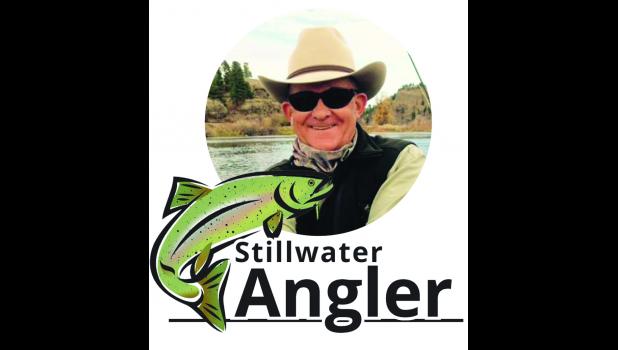Stillwater Angler Fishing Report
Hot weather in the forecast is likely going to finish off the Stillwater for a while. After all, it’s that time of year. Getting all the way to June without an appreciable runoff on the river is usually a rarity.
The Yellowstone has come up and off color a couple of times, but has yet to reach those “gunwale to gunwale” flows that it can so easily do this time of year. That too may change the next week or so.
Waiting out spring runoff is a good time to refine one’s skills.
Fly fishing is really simply about deceit and deception. You’re taking a bunch of feathers, fur and thread, wrapping them around a hook and trying to make them imitate something that exists naturally in a fish’s diet. Once an angler selects a fly, the next thing that comes into play is what’s called presentation.
Essentially it means just exactly what the word says. The artificial fly must be displayed to the fish in as realistic a condition as possible.
For dry flies, it’s a matter of first observing the type and frequency of rise. The type of current that the fish is feeding in also needs to be considered. It’s usually best to try and make a cast to a point on the water a few feet above the feeding fish in order to allow the fly to drift naturally with the current to the feeding fish. Easier said than done! Don’t just start flailing away!
There are a few factors to first consider. Is the fish going to be “lined” by casting the fly line directly over the fish and making a big “splat?” Positioning oneself to make the cast to avoid this problem is important. How fast is the surface current where the fly is going to drift? In order to get the fly to drift naturally, slack may be necessary as well as most often having to mend the line to prevent drag.
Now there are whole books, or at least chapters written on this subject, but since this is the “Reader’s Digest” version, here are the basics.
Drag is what happens when the fly is pulled across the surface of the water at a speed greater than the natural current because the fly line is being pulled by that current. The mend is nothing more than repositioning the line, most often upstream, to reduce or eliminate the amount of drag. That will make the fly look like it’s drifting along naturally. Make sense? Even if not selectively fishing to a feeding or rising fish and fishing blindly in likely water, the principles are the same. So it’s cast, mend and drift…then get ready to set the hook!
Fishing sub-surface with wet flies or nymphs has basically the same considerations. The fly needs to appear to the fish at the right depth in the water column as well as at the right speed.
Depth of the water and the speed of the current are going to be the main determining factors. Generally, the angler is going to want to get the nymph down on the bottom. In shallow, slow moving water, the fly can often meander down into the water column, whereas in deeper and/or swifter water, weight may need to be added to get the fly down where it needs to be in order to be effective. Just like with the dry fly, there can be drag in the line that may require mending in order for the fly to look like it is moving in the water at a natural speed.
To be sure, there are other factors that come into play, like the size and length of the leader and tippet. However, all else is moot if the fly isn’t appearing as it should in terms of speed and location. Remember, we’re trying to fool the fish into eating something artificial. In order to accomplish that, the fly at least needs to look natural in terms of how it appears in the water. That’s the essence of what presentation is all about.
Chris Fleck owns and operates Stillwater Anglers Fly Shop and Outfitters in Columbus. He can be contacted at 322-4977 or via www.stillwateranglers.com

